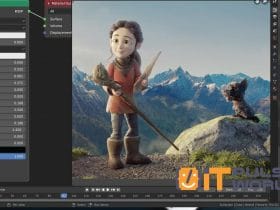How to Create an Engaging Digital Portfolio to Find a Job in Technology
LATEST POSTS

In the competitive world of technology, having a strong and well-designed
digital portfolio can make all the difference when looking for a job. A portfolio not only showcases your skills but also reflects your creativity and problem-solving abilities, which can catch the attention of employers and recruiters. This article shows you how to create an attractive digital portfolio that will stand out in the tech sector.
1. Choose the Right Platform for Your Portfolio
The first step is to select a platform that suits your needs. Some popular options for designing a digital portfolio include GitHub Pages, WordPress, Webflow, and Wix. If you have experience in web development, you can choose to build your own site from scratch, using tools like HTML, CSS, and JavaScript to showcase your technical skills.
2. Highlight your most relevant projects
A good portfolio isn’t about quantity but quality. Make sure to include projects that best represent your technical skills and problem-solving abilities. Each project should be well documented, with clear descriptions of the challenge you faced, the solution you implemented, and the tools you used.
3. Showcase Your Expertise with Key Tools and Technologies
It’s crucial that your portfolio highlights your skills in the most in-demand technologies. If you have experience with programming languages like Python, JavaScript, or Java, be sure to mention it. It’s also important to include the use of tools like Git, Docker, or AWS, which are highly valued in the tech market.
4. Create an “About Me” Section
A key section of any digital portfolio is the “About Me” section. Here, you should include a brief description of your career, your interests in technology, and your professional goals. This section allows you to connect with potential employers on a more personal level, showcasing not only your technical skills but also your motivation and passion for the sector.
5. Optimize your Portfolio for Mobile
Many recruiters now access portfolios from mobile devices, so it’s crucial that yours is fully optimized for small screens. Make sure text, images, and links look and work properly on mobile devices. A portfolio that isn’t responsive can create a bad impression and cause you to miss out on opportunities.
6. Include your Code on GitHub
For developers, having an active GitHub profile is crucial. Include links to your GitHub repositories in your portfolio so employers can see your source code, which should be clean, well-documented, and functional. This shows your ability to work in a team and handle version control, two essential skills in the tech sector.
7. Incorporate Testimonials and References
If you’ve worked on freelance projects or collaborated on open-source projects, including testimonials from colleagues or clients, you can add weight to your portfolio. References from people you’ve worked with can provide external validation of your skills and professionalism.
8. Keep your Portfolio Updated
The technology field is evolving rapidly, so it’s essential to keep your portfolio up to date with the latest projects and skills. As you learn new technologies or complete new projects, be sure to include them in your portfolio. A well-maintained portfolio shows that you’re keeping up with the latest industry trends.
An attractive digital portfolio is essential to standing out in the tech job market. By choosing the right platform, highlighting your most relevant projects, optimizing the site for mobile, and keeping it up to date, you can significantly increase your chances of landing the job you want. Remember that your portfolio is an extension of your personal brand, and it should reflect your creativity, technical skills, and professionalism.




